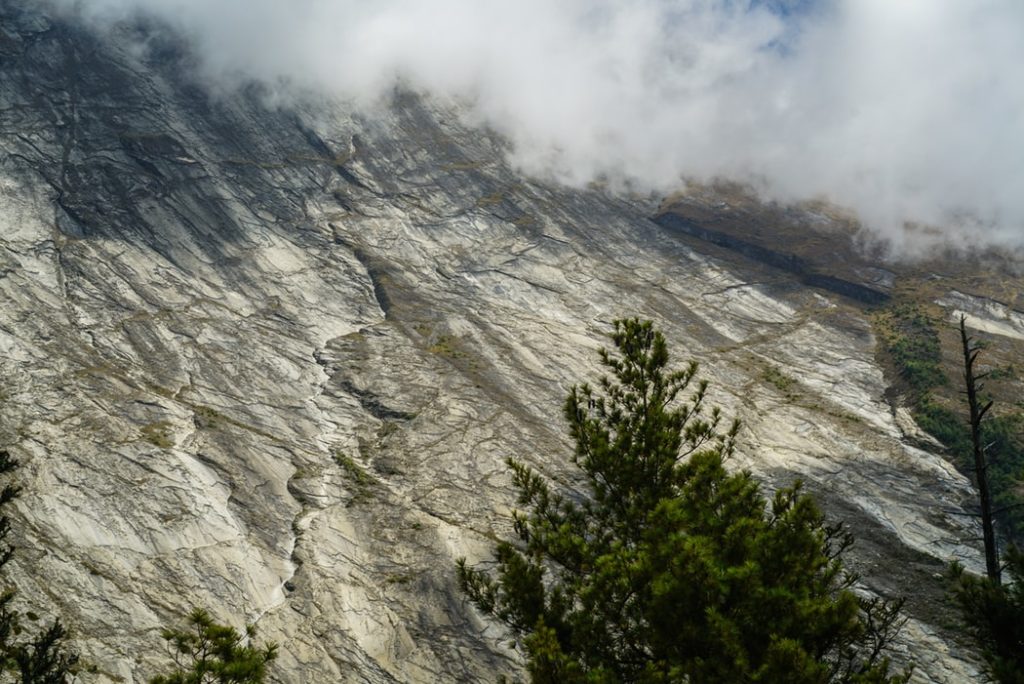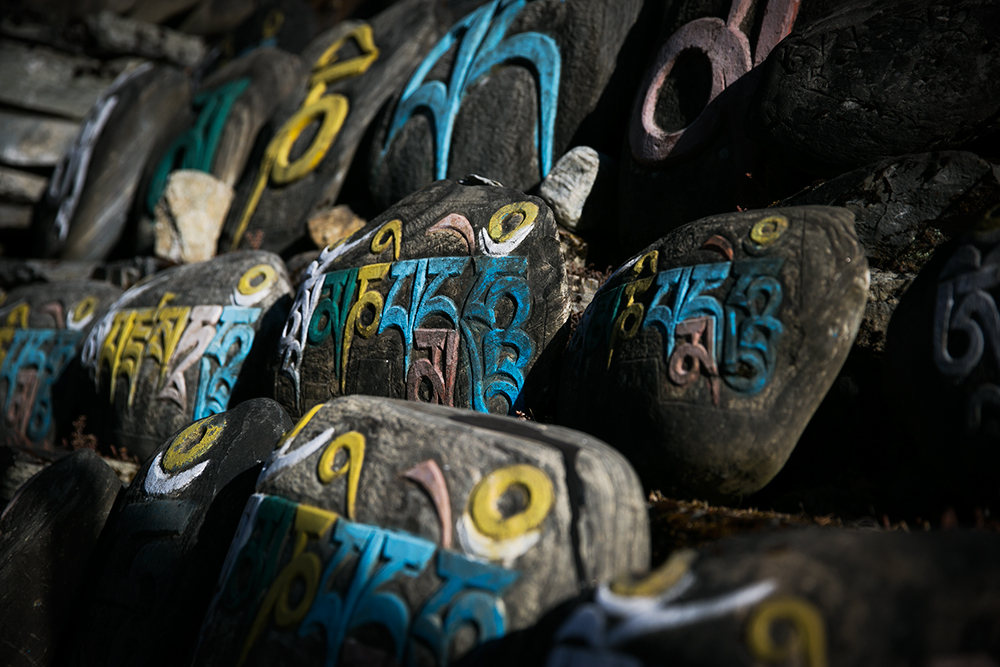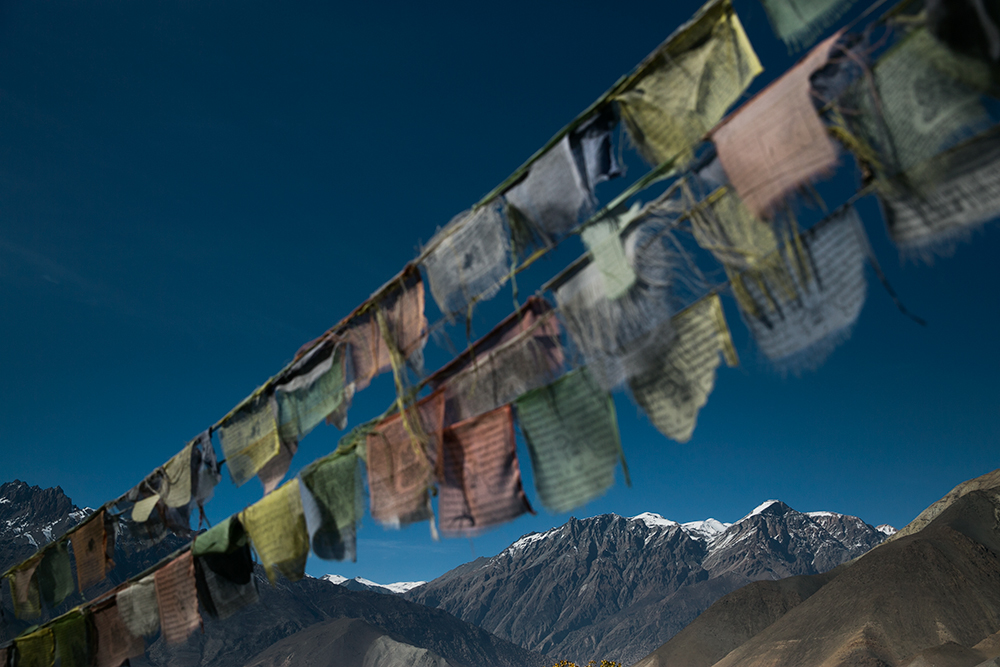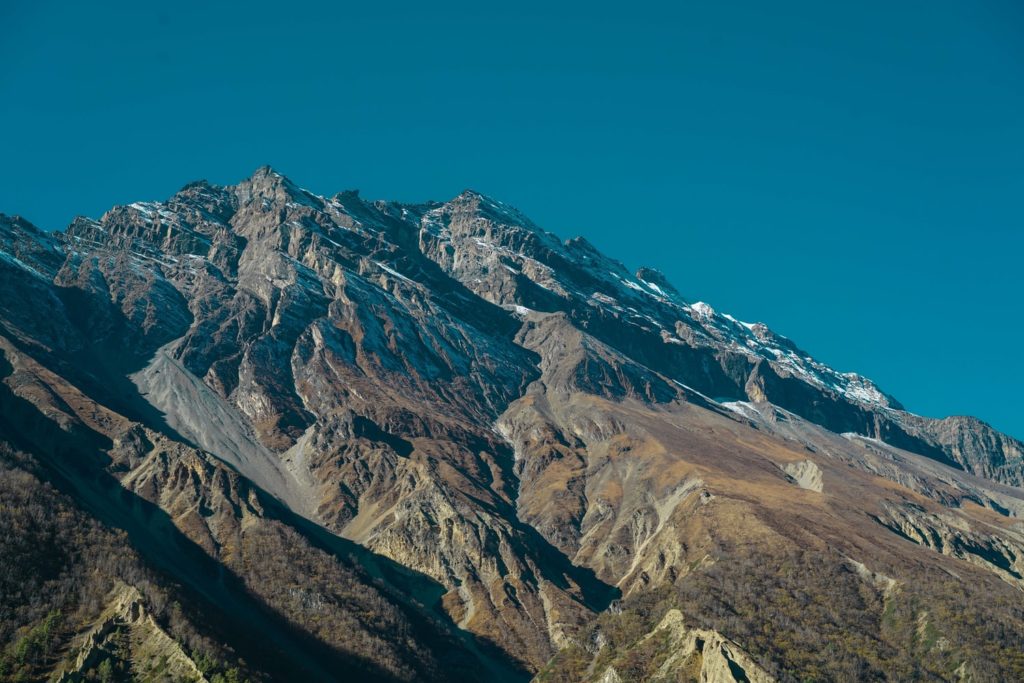Known to be a trekkers dream, Annapurna circuit trek is one of the most famed trekking destinations in Nepal.
The astonishingly beautiful landscapes, breathtaking mountain ranges, sparkling rivers, frequent gorges and caves, and diverse trails, all account for emphasizing the aesthetics of this circuit area.
If you are planning to experience and witness the beauty of mesmerizing hills and Himalayas and want to know about the most preferable time to trek in the Annapurna circuit, you have to first be well acquainted with the Annapurna circuit and its weather.
GETTING TO KNOW THE ANNAPURNA CIRCUIT:
Two words which best define the Annapurna circuit trek is Mesmerizing and Exhilarating. Annapurna circuit trek has a different start point which accounts for the total length of the trek.
The average duration trekkers take to complete this journey can range from 15 to 25 days, depending upon the trek route, the medium of transports used and the number of acclimatization days.
The route distance can vary from 160 km to 230 km and the altitude peaks above 5000 m, Thorung La pass (5416 m) being the highest point of the trek.
Most trekkers start their journey from either Besisahar or Bhulbhule. From the start of the journey, trekkers will find themselves walking through and along the paddy fields, lush jungles, whistling waterfalls, luminous rhododendrons, and more serene locations, depending on the time of the year.
The journey further continues to expose the mountains ranges including the Annapurna Massif, Machhapuchhre, Dhaulagiri, Manaslu, Tilicho Peak, Gangapurna, Pisang Peak and Paungda Danda.
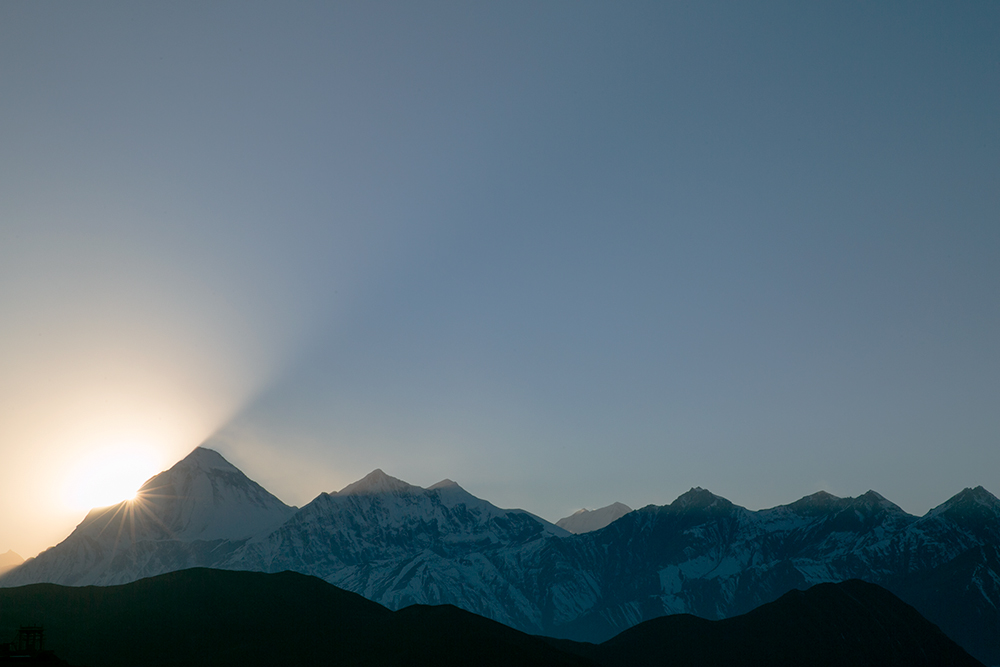
ANNAPURNA CIRCUIT WEATHER:
Annapurna region is located in the rain shadow area so it receives lesser rainfall than other parts of Nepal. Though most of the Himalayan regions cannot trek during monsoon, the Annapurna circuit is quite an exception because it receives only about 10% of the monsoon rainfall.
However, the weather in the mountains can be quite unpredictable, so it’s always a wise idea to be fully equipped with essential gears despite the weather forecast.
Broadly, the weather of the Annapurna circuit can be divided into four seasons: Spring, Summer, Autumn, and Winter.
Each season and weather condition has some different experiences to offer to you Some of you are chasing the best view and weather, while some like to trek during the quieter and cheaper season.
Based on the category of weather, below are the detailed information about the highlights, challenges, and specialties of each season.
SPRING:
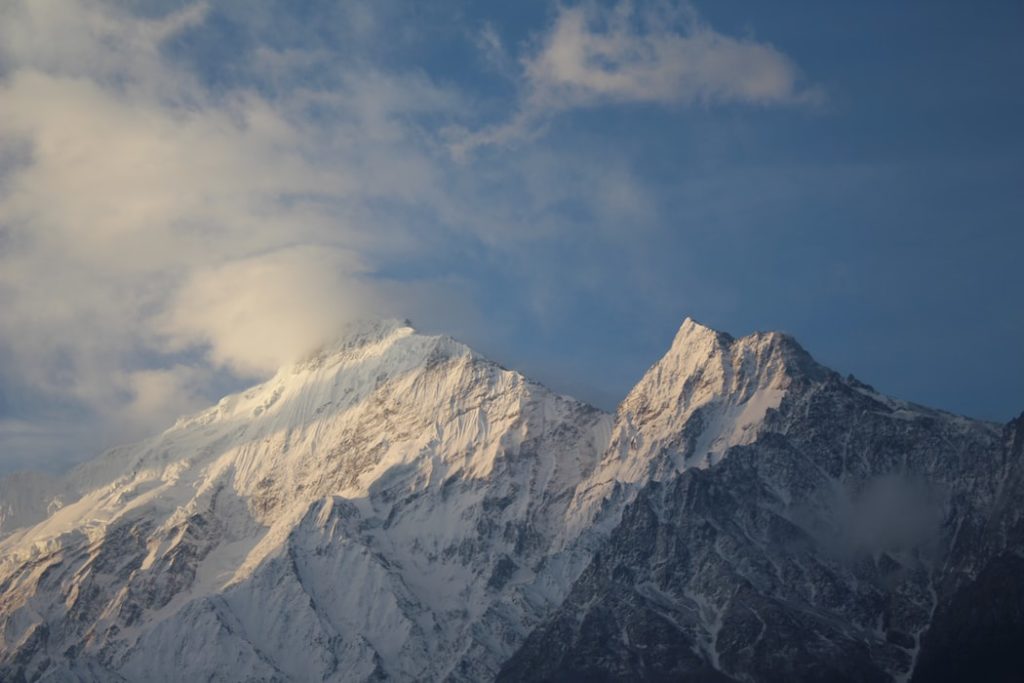
The months, March, April, and May, mark spring season in Nepal. The weather during the spring is quite warm and clear in the Annapurna circuit region.
The crystal clear views of mountains and the vibrantly blooming rhododendrons are the most alluring highlights of Annapurna circuit during this season.
The temperature of the lower regions of Annapurna circuit during April is about 20-degree celsius or lower. The temperature further declines during nights and with ascending altitude. Whereas, the temperature and the overall weather is quite warmer during May compared to April.
Spring comes as a primary preference of season, who are fanatic about crystal clear panoramic views and the vividly blooming hills garnished with rhododendrons.
SUMMER:
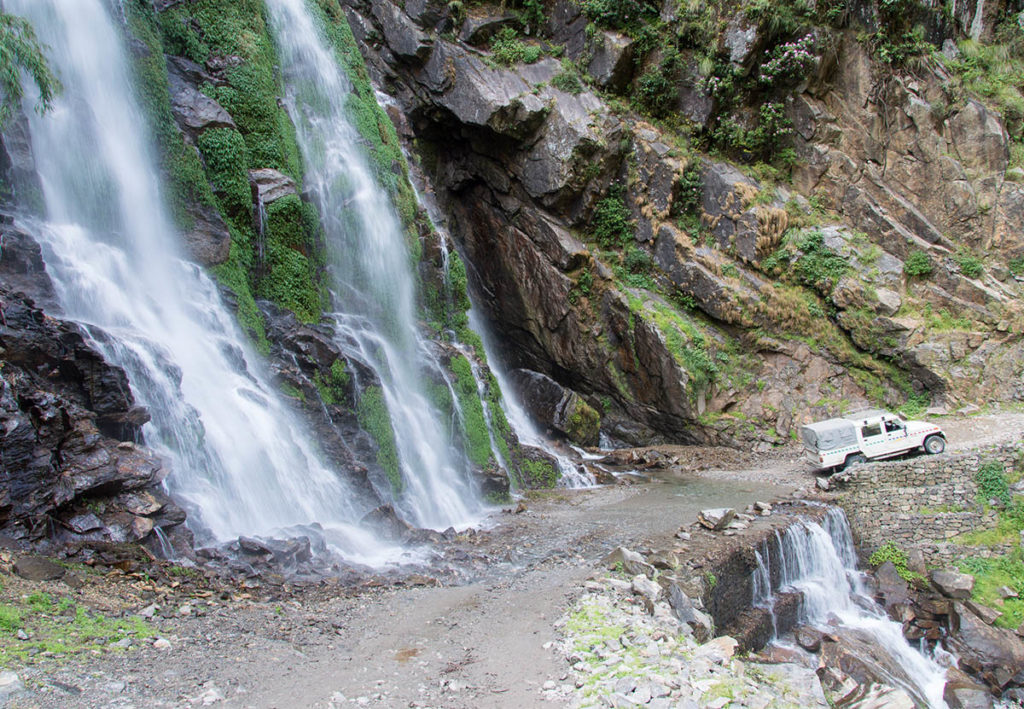
Summer in Nepal starts from mid to late June or early July. The monsoon of June invites the heat, whereas the August bids farewell to the summer.
Even though Nepal experience torrential downpour during this season, rainfall is quite scarce in some parts of Annapurna circuit region, including Manang and Muktinath, because of its location. This feature makes Annapurna circuit trek able even during this season, though it’s not the best time to trek around.
The major problem you face while trekking during this season is that they are likely to experience mudslides, leeches, mosquitoes, and slippery trails. But, the number of trekkers during this period is low and there are people who like to trek when the traffic of visitors is scarce.
Also, there are numerous floras which bloom and grow during this season and adds on to the aesthetics of the trail during summer.
Another aspect which acts as a highlight of this season is the local Yartung Mela which takes place in Muktinath during the full moon of August.
This fair is celebrated for 3 days and observes horse race, local dances and songs, archery, and more.
AUTUMN:
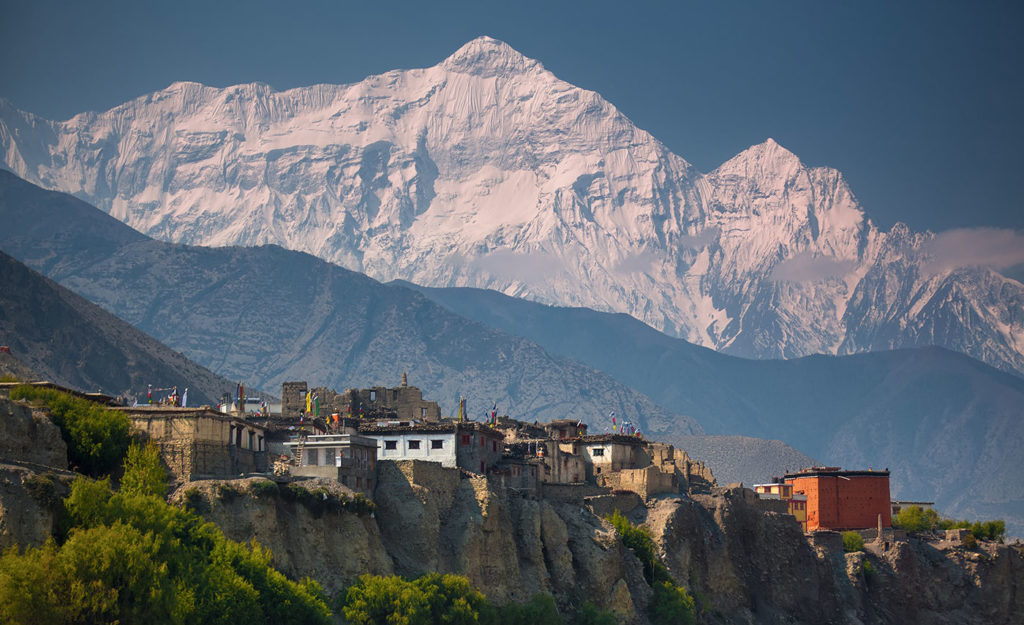
September welcomes the autumn whereas November marks the end of the autumn season in Nepal.
This season is considered as the ideal season to trek the Annapurna circuit, primarily because of the considerably predictable weather and higher visibility.
You don’t have to carry any special gear to trek around this season. This also implies that you are destined to meet a huge number of trekkers on the trail.
The weather of the Annapurna circuit area during autumn is very pleasant with a clear sky and fresh breeze. Along with the transparent and pleasing view, rainfall during this period is also low.
The lower regions of the circuit experience temperature of around 18 degrees Celsius during the day time and it tends to lower as the night falls. With the increment in altitude, the temperature starts to drop considerably.
So you must pack their backpack accordingly.
Not just the weather, but also the festivals and occasions which people of Nepal celebrate during this time of the year also captivates trekker’s attention and leaves them mesmerized.
The biggest festival of Hindus of Nepal, Dashain and Tihar fall during the October and it is celebrated with full glory all Hindus. So, having the opportunity to be part of such celebrations ensures additional fun and joy.
As this season is the busiest, teahouses, lodges, restaurants and the trails are packed with trekkers, so it’s a wise idea to be an early bird while making reservations for this season. Also, trekking during the autumn is quite costlier as compared to the other seasons.
WINTER:
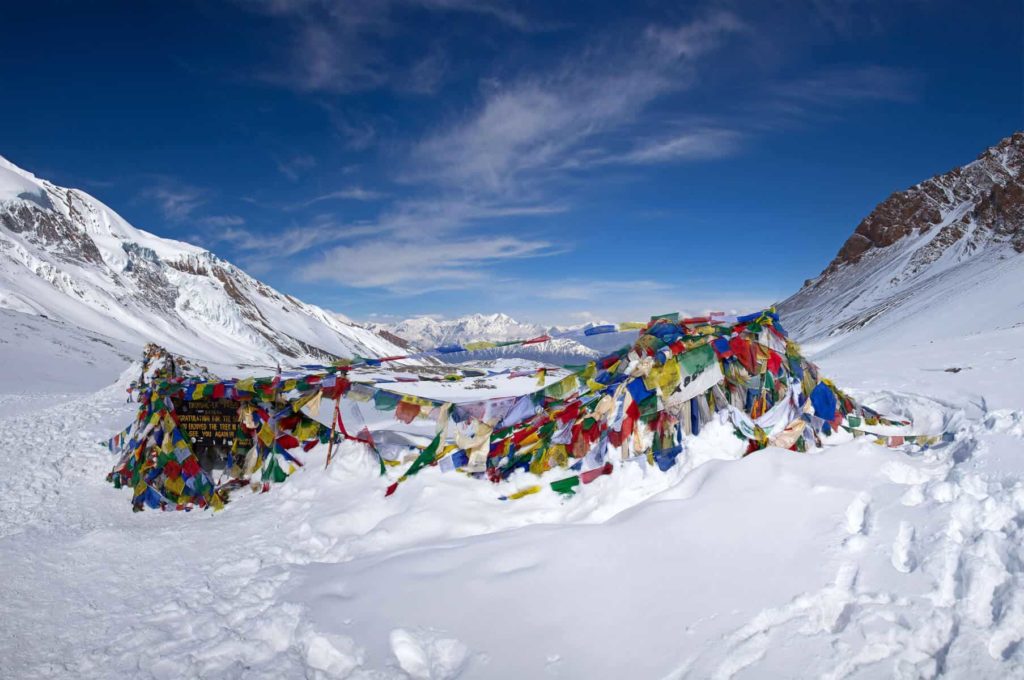
The end of November starts inviting winter and the cold further graduates with the arrival of December. December to February is the chilliest months in Nepal.
The weather is very cold starting from the lower regions and the temperature further drops to below freezing with a rise in altitude. Thorong La is likely to get closed during this season due to heavy snow. Likewise, there are limited, but not scarce, a number of teahouses and lodges which are open.
The ones which are open are usually very welcoming and are generous enough to provide you hot water, fireplaces as well as extra blankets.
The winter tends to have quite unpredictable weather as the days are generally cloudy and nights are freezing. But, there can be days when the weather is crystal clear and is generous enough to provide a spectacular view of the glorious mountains.
Though trekking in higher altitude during this season is not recommended, there are limited numbers of trekkers who are up for the adventure and make their journey across the snowy trails. Their major reason for trekking during this season is the calm and quiet trail and the view of snow-capped mountains and peaks.
As Christmas falls during this season, one will get to celebrate Christmas with giant snowman amongst the snowy mountain. Likewise, there are various other occasions and festivals during this season including the Nepali New Year, Tamu Lhosar and Gyalpo Lhosar. It’s always a pleasing experience to be a part of celebration amongst people from different parts of the world.
FEW THINGS TO KEEP IN CONSIDERATION:
Annapurna blizzard:
Annapurna circuit experienced a heart wrenching incident in 2014 when a cyclone passing through caused a blizzard and killed over 43 people. As the weather of higher altitude can be quite unpredictable and invite some unfortunate incidents, one must always be prepared for extreme weather conditions regardless of the time period of travel.
Pack correctly:
Many trekkers tend to under pack or over pack stuff. Never miss out on any essentials which you will need according to the weather conditions. But this doesn’t imply that you carry a heavy and extra unnecessary load while on the trail.
Physical fitness:
Annapurna circuit trek is quite a challenging trekking expedition with an altitude over 5000m, so maintaining or fitness level will help you trek without major health issues.
Listen to your body:
Always give attention to any signs your body might be showing in the high altitudes. Don’t neglect the signs, as challenging your body to extremities might later result in severe consequences.
Final Thoughts:
Spring and autumn are the ideal seasons to trek around the Annapurna circuit as this time period offers magnificent views and has less challenging weather.
The only drawback of these time periods is the traffic of visitors and trekkers. You’ll encounter a huge number of trekkers on the high passes and lower trails during autumn as well as spring. But the spectacular view and the safe climatic condition outweigh this drawback.
